The facts are public knowledge. On 22 July 2012, wearing a police uniform bought online, Anders Behring Breivik took the ferry MS Thorbjørn to the island of Utøya, north-west of Oslo. There, teenagers were attending a summer camp organised by the Norwegian Labour party. Two hours earlier, Breivik had detonated a car bomb outside the office of the prime minister, Jens Stoltenberg, killing eight people. Now, in the course of just over an hour, he shot dead 69 more. The majority of the victims were in their teens.
Two films now return us to that day. The British director Paul Greengrass brings us 22 July; Utøya – July 22 is by Norwegian director Erik Poppe. Poppe’s Utøya takes place in howlingly stark real time, confined to the island for the 72 minutes of the massacre. Greengrass also deals with the aftermath, the frail recovery of survivors and the trial of Breivik – for all his stunted fantasy life, not a child but a man of 32.
“He absolutely understood the theatre of killing kids,” Greengrass says, when I meet him on an autumn morning in London. “The symbolism. You cut off tomorrow’s head. He designed it that way.”
Adults in police uniforms, the dead bodies of young people: similar imagery hangs over another new film, one likely to be seen by a vast number of teenagers. Directed by George Tillman Jr, The Hate U Give, based on the bestselling YA novel by Angie Thomas, recently opened in the US to strong reviews. The heroine is Starr, a 16-year-old African American schoolgirl who sees her best friend shot dead by a white police officer during a stop and search. From that night, she is propelled into activism.
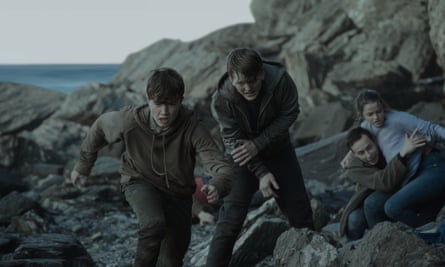
Readers of the book knew it to be rooted in the real world – the grim litany of black American boys and men killed by white police officers. The most notorious case remains that of 12-year-old Tamir Rice, shot dead in Cleveland, Ohio in 2014 while playing with a toy gun, but the emergency goes on. This June in Pittsburgh, Antwon Rose, 17, was shot in the back running from police who suspected his involvement in a drive-by shooting. He proved to have been unarmed.
As well as a night out, film is a rolling record of real events – and the psychic response that bubbles up into scripts and stories. Young people still make up the greater part of audiences at the movies, so it makes sense that cinema reflects problems that affect them – police racism and far-right violence, yes, but economic and environmental hostilities, too. In the tumult of 1968, there was talk of a “war against the young”. Fifty years later, that just sounds like how it is – and a war creates war movies.
The last YA story to have the impact of The Hate U Give was another tale of licensed violence against the young – The Hunger Games, by Suzanne Collins, which had its 10th anniversary last month. In a string of bestsellers adapted into blockbuster movies, the America of its heroine Katniss Everdeen forces the children of the nation into a ritual televised bloodletting that, depending on your perspective, mirrored the eternal trauma of teenage life or the savage logic of neoliberalism. The beauty of the series was that for much of the audience it was both.
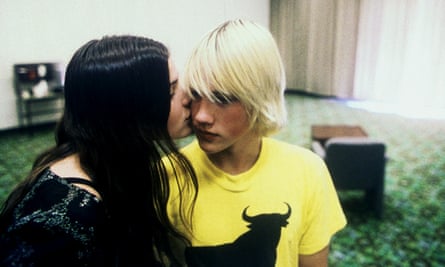
But strong meat as it was for a corporate Hollywood franchise aimed at 15-year-olds, The Hunger Games put quote marks around its most radical ideas. Kids from poor families were thrown into gladiatorial combat at the behest of a repressive government – but all in a not-quite-yet future. Physically too, while adults made sport of youthful violence, theirs were not the fingers on the triggers. In 2018, the moment for analogies feels as if it may have passed. The adults are holding the guns. The time is now.
In that respect, The Hate U Give and the films about Utøya are part of an older tradition, one that told children adults were to be feared – especially when they were in authority. After all, the New Testament began with Herod and the slaughter of the innocents, and fairytales brimmed with lessons for children of the threat presented even by their own parents. The warning was not fanciful. “Hansel and Gretel” is thought to have been inspired by the “great famine” in 14th-century Europe, noted for infanticide and cannibalism.
The insatiable storytelling machine of cinema picked up the thread. Conversations about the beginnings of film noir, the crime thriller and the serial killer movie all usually end up in the same place – M, the 1931 German masterpiece directed by Fritz Lang. And this most formally revolutionary of films was a story about child murder, in a Weimar Berlin haunted by the predator Hans Beckert, indelibly played by Peter Lorre.
But then the young became the monsters. John Wyndham’s The Midwich Cuckoos was adapted into The Village of the Damned, idyllic England terrorised by nightmare moppets. Lord of the Flies, William Golding’s classroom perennial with Ralph, Piggy and the rest was kept company in America by The Bad Seed and later waves of horror movies, from The Exorcist to Children of the Corn.
A subtly different postwar mood emerged – one of unease and resentment at the “teen-ager” with money and expectations. For much of the second half of the 20th century, western life was obsessed with the moral failings of children and young people – corrupted by everything from video nasties to raves, threatening in turn to ruin decent society. In 2018, the era in which the gravest menace to society was acid house feels distant indeed. It has never been clearer that the world has been made unsafe for children by adults.
Perhaps the first great modern youth movie arrived in 2000, the Japanese action thriller Battle Royale, in which a class of high school students are transported to a remote island to fight to the death. Directed by Kinji Fukasaku, the film had a giddy sheen of pop ultraviolence that won it a place as a Saturday night cult thrill, endorsed by Quentin Tarantino (its influence lives on in the ubiquitous game Fortnite). Less discussed was the premise, a population cull organised by the Japanese government in response to extreme recession. Off screen, the real Japan had just endured the long slump of “the Lost Decade”. The west had glimpsed its future.
Formerly a writer of children’s TV and picture books, Collins published the first of her Hunger Games series on 14 September 2008. The next morning, Lehman Brothers filed for bankruptcy. The Hunger Games arrived with flawless timing in the bookshops of a changed world. The change wasn’t just economic – or rather, economics changed everything. Greengrass also sees 2008 as the turning point. “My parents lived through the crisis of the 1930s and what followed – populism and nationalism. And the direct consequence of 2008 was nationalism getting off the leash again. Which is how you end up with Breivik.”
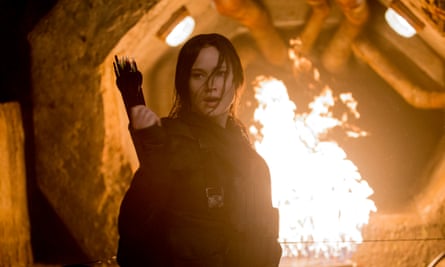
Since the crash, tribal division has been all. In April 1999, 12 young people and a teacher were murdered at Columbine high school by fellow students Eric Harris and Dylan Klebold. The case ratcheted up the debate about the lost souls of teenagers (among the films made in response was Gus Van Sant’s Elephant). But the survivors were not condemned. That would only happen now. This February, after 17 people were killed at Stoneman Douglas high school in Parkland, Florida, surviving students were accused by rightwing blogs of being actors hired to promote anti-gun sentiment. In 2018, children are targets twice over – the first time of gunmen, the second of conspiracy theorists.
In Europe, Breivik’s “rising far-right tide” now feels queasily self-evident. In Britain, anti-migrant rhetoric has become more vicious, even as it has become more obvious how many children are caught up in the global refugee crisis. When 14 teenagers from the Calais refugee camp were accepted into the UK in 2016, Conservative MP David Davies demanded their teeth be examined to prove their age.
Before he directed 22 July, Greengrass was planning to make a film about migrants set in Lampedusa, the Italian island for which boats still head from the coast of Libya. “People coming from Niger or Mali, held in some godforsaken place then trucked down to the beach, these are the journeys of our time. In the end, I felt like I wasn’t the right person to tell that story, but the fear of those arrivals in Europe fuelled by the economic crash, well – that’s where all of this becomes one conversation.
“What’s coming for young people are choices,” he says. “They’re going to have to fight very articulately against my generation, frankly. And they’re going to have to fight hard against nationalism.” He nods at the mention of a war on the young. “That is exactly what this is.”
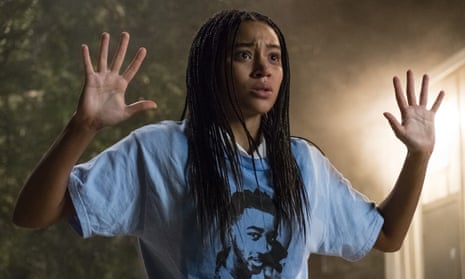



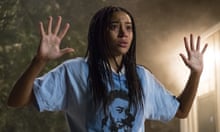

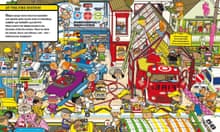
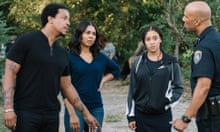

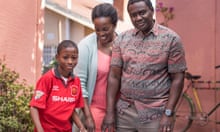

Comments (…)
Sign in or create your Guardian account to join the discussion